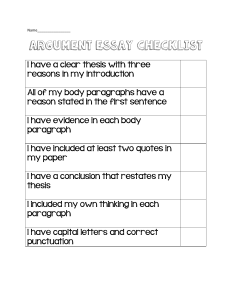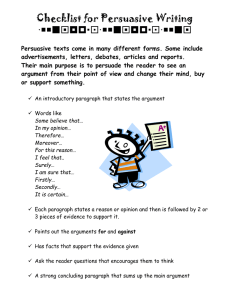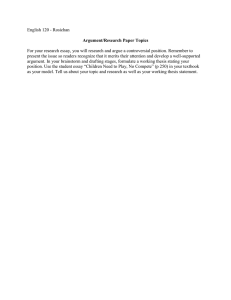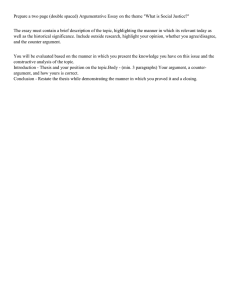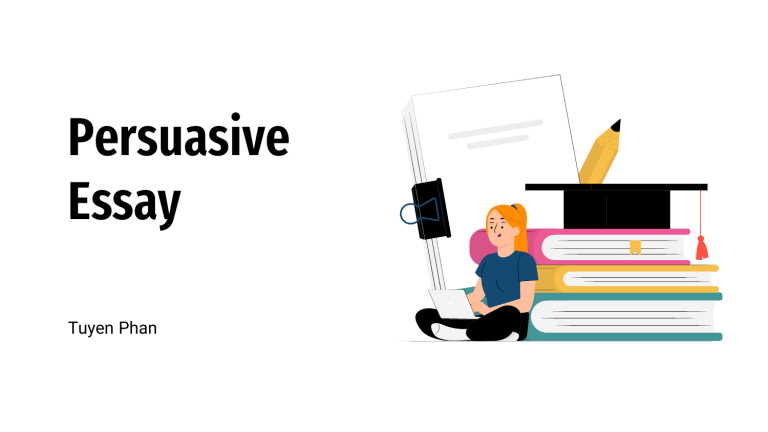
Persuasive Essay Tuyen Phan 1. What Is a Persuasive Essay? ● ● Persuasive essays, also called argument essays, are another common type of academic writing. The writer’s purpose is to state the claim (opinion) and persuade the audience to agree with his or her opinion about a controversial topic. 2. Convincing the Reader ● ● ● Your job is to convince your readers that your opinion about a topic (thesis statement) is the most valid viewpoint. Your essay needs to be balanced – it must include an opposing viewpoint or counter-argument – what someone on the other side of the issue would argue. As soon as you give your opponent’s point of view, you must offer a refutation of it. This means that you refute the other point of view, or show how it is wrong. Persuasion may make emotional appeals or seek to assert the writer’s authority on the subject in order to convince the reader. 3. Types of Support Most of the types of support used for persuasive essays are: ● Facts ● Reasons ● Examples ● Statistics ● Evidence from sources with appropriate citations Two types of support that are particularly useful Predicting the consequence Counter-arguments 3.1. Predicting the consequence ● ● ● Help the reader understand what will happen if something does or does not happen. This type of support will be introduced with “If …” For example, to convince your readers that same-sex schools are disadvantageous, you might say, ‘If students do not go to mixed schools, they will lose many opportunities to interact with members of the opposite sex, which may hurt them in their development of important social skills.’ ‘If students do not go to mixed schools, they will be shy and will not be able to talk to members of the opposite sex.’ Avoid exaggerating the consequences 3.2. Counter-arguments ● ● ● Consider the opposition’s point-of-view, then present arguments against it. This is often the most difficult type of support. Counter-arguments are often presented first in a paragraph. Useful language for this type of support are phrases or transition signals such as Opponents claim that … However … Although … Ex: Although it has been suggested that same-sex schools make children more focused on their study, it is generally agreed that children of the same sex are more likely to talk with each other during class time. 4. Essay Structure INTRODUCTION • Hook – the interesting first sentence • Background information – give context to your argument/ subject • Thesis – a clear, concise statement of your main argument, the overall idea you’ll be arguing. EACH BODY PARAGRAPH • Only one point to support your thesis per paragraph • Topic sentence – reflects the main idea of the paragraph • Evidence – information from a reliable outside source (not your own opinion) that supports the main idea of the paragraph. • Analysis – show how your evidence supports your argument; build your argument 4. Essay Structure CONCLUSION • Tie up the essay – briefly sum up the main point • Establish significance • Give a final thought

